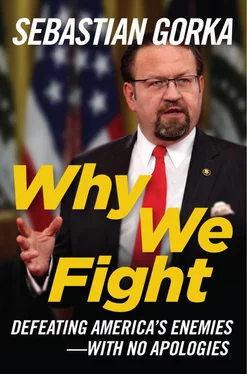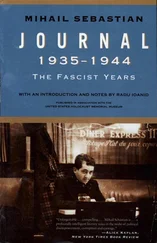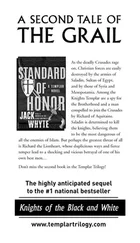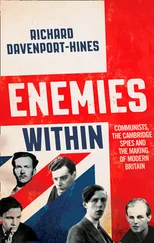Today, facing ideological foes once more, we have much to learn from this mode of war. As our new commander in chief develops his own Trump Doctrine, his team would be wise to learn from President Reagan’s example and from the techniques developed under the Active Measures Working Group.
America’s Warriors
Chesty Puller
The Marine Legend Who Turned the Tide in the Pacific

Some men are born warriors.
The male is the more aggressive sex, but few men are sculpted in granite with a spine of steel.
It is said that bravery is not the absence of fear, but the capacity to act despite one’s fear. That may be true. But there are those who naturally embrace danger, who instinctually run toward the gunfire. Lewis “Chesty” Puller epitomizes that type of man as the most decorated marine in the history of the United States Marine Corps and the only American awarded the US Army Distinguished Service Cross and the Navy Cross five times.
Born in West Point, Virginia, Lewis Puller tried, and failed, to join the army at age sixteen during the Border War with Mexico. His mother prevented this attempt by withholding her consent for the young man to enlist. So instead, he enrolled at the Virginia Military Institute in 1917, enlisting in the marines the next year with the hope of going “where the guns are!” The First World War ended, however, before the stocky and barrel-chested “Chesty” could be deployed.
But Corporal Puller would indeed see duty overseas, as he was shipped out to Haiti to train with and fight alongside the local paramilitary gendarme forces in dozens of skirmishes. After proving his mettle as an NCO, he began his career as a Marine Corps officer when he was recalled stateside to be commissioned a second lieutenant. [1] He had, in fact, already attended officer candidate school in 1919, and he had been commissioned in the reserves five years before shipping out to Haiti. Because of the reduction in strength of the corps after World War I, however, his officer rank was inactive, and he remained a corporal until returning to the mainland.
But foreign ports beckoned once more, and the young officer left for the first of multiple tours in Nicaragua to fight alongside the local national guard in the unconventional war with Augusto César Sandino’s guerrilla forces. It was here that “Chesty” would earn his first Navy Cross for leading his marines in no fewer than five battles in which he and his men were greatly outnumbered. “[T]he bandits were in each engagement completely routed,” read the citation that accompanied his medal.
He earned his second cross in the last major battle with the rebels, near El Sauce. The citation recounts the young marine’s intrepidity in unusual detail:
Lieutenant Puller and his command of forty Guardia and Gunnery Sergeant William A. Lee, United States Marine Corps, serving as a First Lieutenant in the Guardia, penetrated the isolated mountainous bandit territory for a distance of from eighty to one hundred miles north of Jinotega, his nearest base.
This patrol was ambushed on 26 September 1932, at a point northeast of Mount Kilambe by an insurgent force of one hundred fifty in a well-prepared position armed with not less than seven automatic weapons and various classes of small arms and well-supplied with ammunition.
Early in the combat, Gunnery Sergeant Lee, the Second in Command, was seriously wounded and reported as dead.
The Guardia immediately behind Lieutenant Puller in the point was killed by the first burst of fire, Lieutenant Puller, with great courage, coolness and display of military judgment, so directed the fire and movement of his men that the enemy were driven first from the high ground on the right of his position, and then by a flanking movement forced from the high ground to the left and finally were scattered in confusion with a loss of ten killed and many wounded by the persistent and well-directed attack of the patrol. The numerous casualties suffered by the enemy and the Guardia losses of two killed and four wounded are indicative of the severity of the enemy resistance.
This signal victory in jungle country, with no lines of communication and a hundred miles from any supporting force, was largely due to the indomitable courage and persistence of the patrol commander [Lieutenant Puller].
Such a remarkable record of bravery would satisfy most marines, but not the man who would become the legendary General Chesty Puller.
The young Devil Dog’s early career was typically heterogeneous, with stints at Fort Benning, Georgia; the facility later known as Camp Lejeune, North Carolina; Quantico, the crossroads of the corps; aboard USS Augusta ; and even in China, commanding a marine detachment in Beijing and later in Shanghai.
Puller’s experiences and acumen led to promotions and command of the First Battalion, Seventh Marines, (the “1/7”) of the First Marine Division, by which time the United States had entered the Second World War.
The year after the attack on Pearl Harbor, where he had served before the war, Chesty’s actions led to the rescue of three companies surrounded by Japanese forces along the Matanikau River on Guadalcanal. He called in fire from offshore vessels, which allowed smaller craft to approach the shore for an amphibious evacuation of the units trapped behind enemy lines. This action earned him a Bronze Star. But yet to come was his greatest feat, an act of bravery against seemingly insurmountable odds, for which a third Navy Star was pinned to that formidable chest. More importantly, the outcome of that battle turned the tide of the war in the Pacific in the favor of America.
At this point, it is important to remember whom we were fighting in the Pacific. When we think of World War II, we usually think about the European theater. Its hold on our imagination is no doubt the result of the horrifying evil of the Nazi regime and the spectacular allied invasion on D-Day—the largest combined arms invasion in human history—which launched the final drive to victory.
But the Pacific theater and our imperial Asian enemy were as much a part of America’s war experience as the battlefields of Europe. And, of course, the blow that brought the hostilities there to an end—the atomic bombing of Hiroshima and Nagasaki—marked the beginning of a new epoch.
The Pacific theater and our Asian foe were horrific. The inhumanity of Tojo’s forces—thousands of prisoners of war brutalized in the Bataan Death March, human experimentation and biological weapons research on live subjects by military Unit 731, thousands of civilians and POWs worked and starved to death on the Burma Railway, the torture of prisoners and the wanton execution of captured airmen in contravention of the Hague Convention and the laws of war—was exceeded only by the executor’s of Hitler’s “Final Solution.”
This was the savage foe that the now Lieutenant Colonel Puller faced down during the strategically pivotal battle for Henderson Field.
By the end of October 1942, the situation on Guadalcanal had swung back and forth repeatedly, with the situation no longer looking good for US forces. In early August they had taken Henderson Field, a critically important airfield now protected by Puller’s men, a sole battalion of the First Marine Division. But the Japanese wanted it, and they had the forces to take it. The order was given to the Imperial Sendai Division to destroy the Americans and take and hold the airfield.
Short on food and water, menaced by malaria, and exhausted from building defensive redoubts around the airfield, the 1/7 was stretched thin by the night of October 24. Dozens of men had already been lost in ninety minutes of long-range shelling from the fourteen-inch guns of the Japanese battleships Haruna and Kongo and Japanese aerial bombardments. The 1/7, moreover, had no organic reserve element in case it was overrun. But Colonel Puller was most definitely in charge.
Читать дальше













